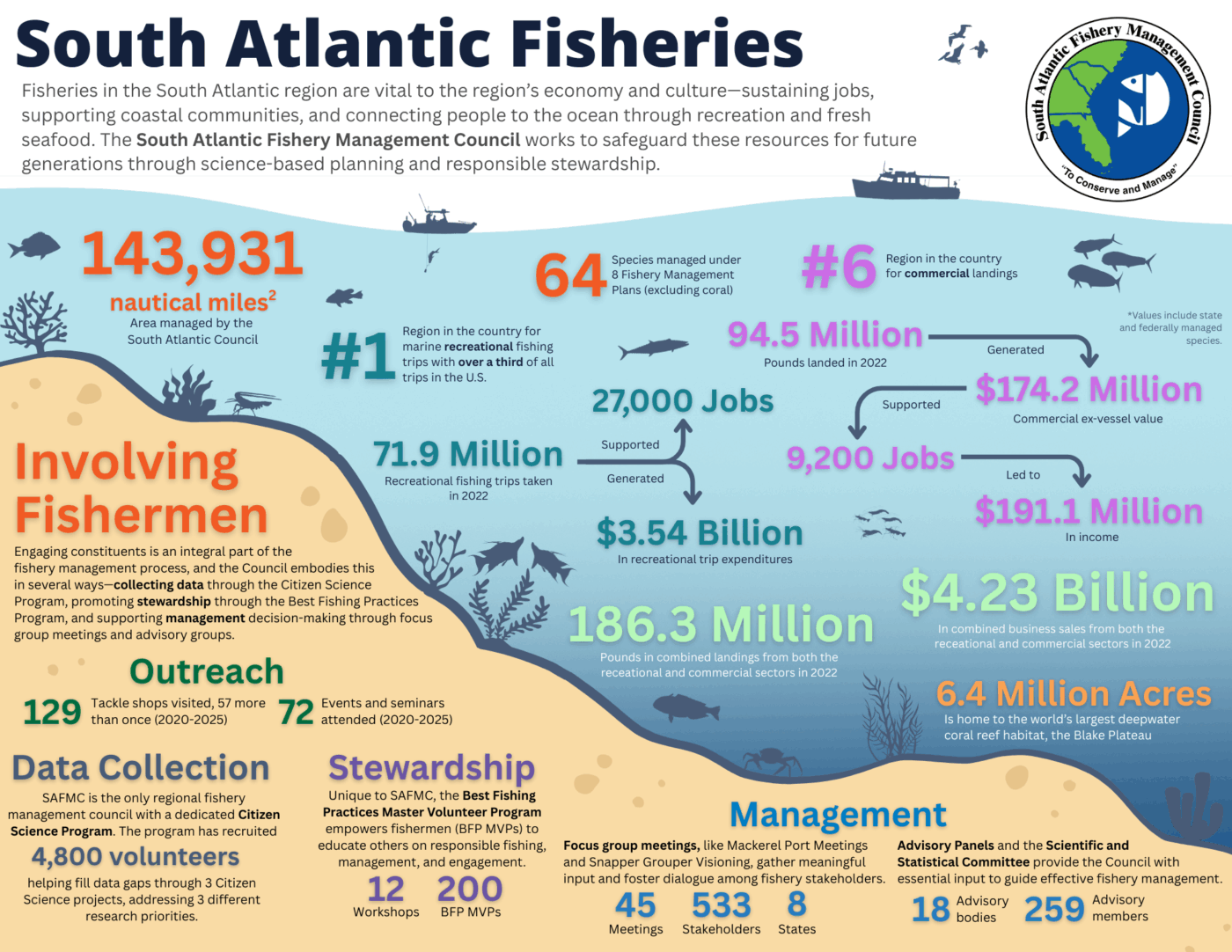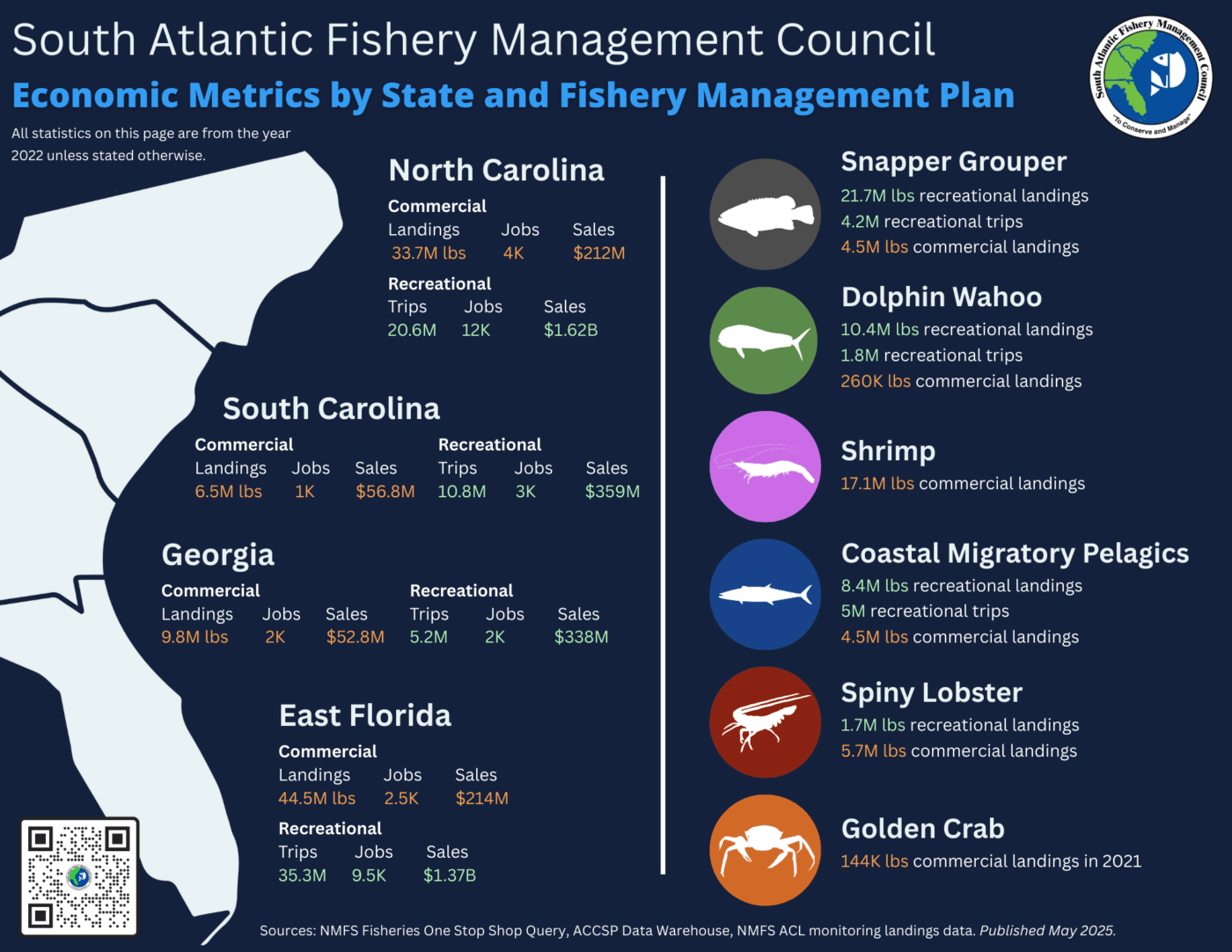About the Council
The South Atlantic Fishery Management Council is one of eight regional fishery management councils in the U.S. established by Congress in 1976 through the Magnuson-Stevens Fishery Conservation and Management Act to manage fisheries within U.S. federal waters.
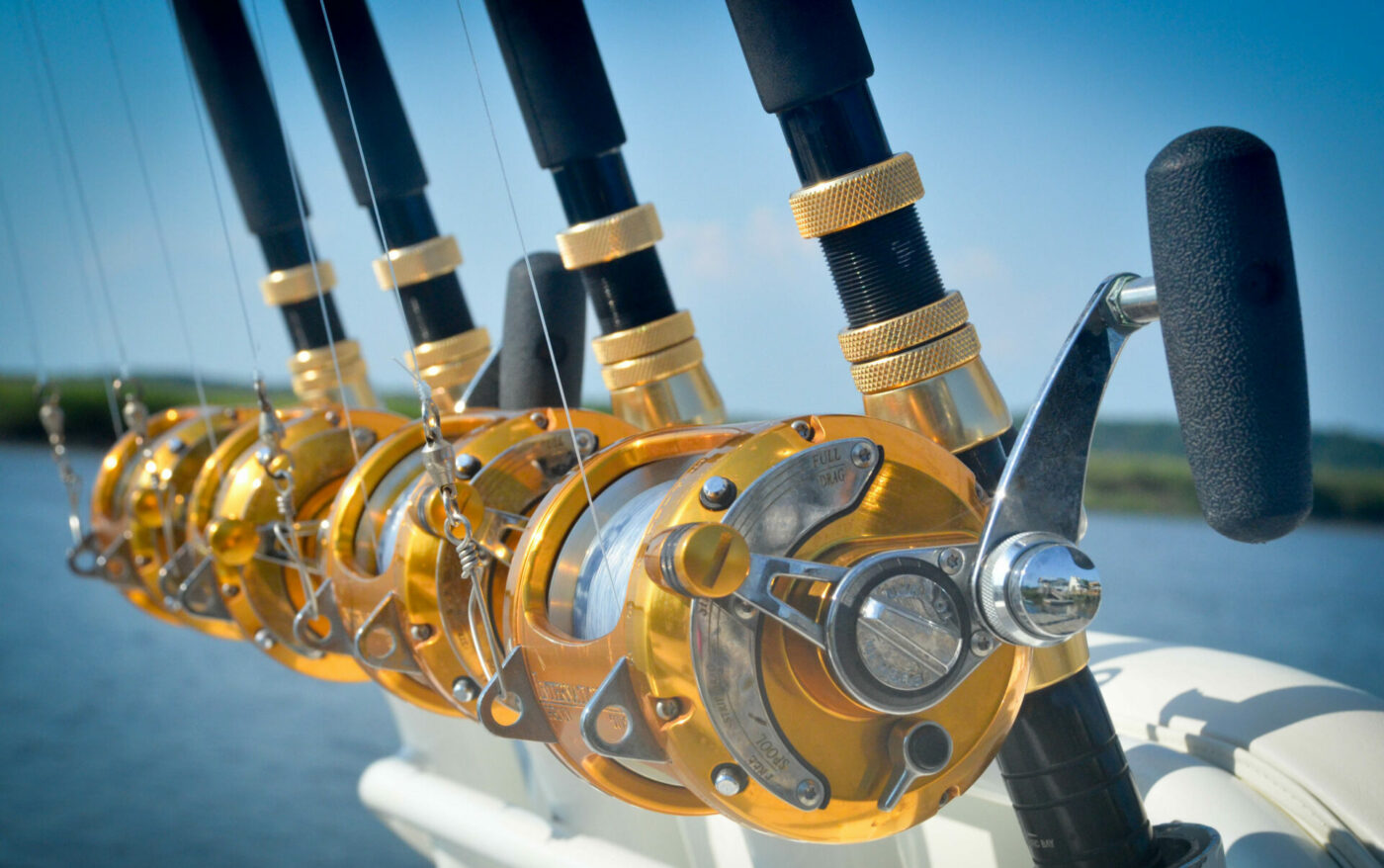
Jurisdiction
The South Atlantic Council is responsible for the conservation and management of fishery resources in federal waters ranging from 3 to 200 miles off the coasts of North Carolina, South Carolina, Georgia, and east Florida to Key West.
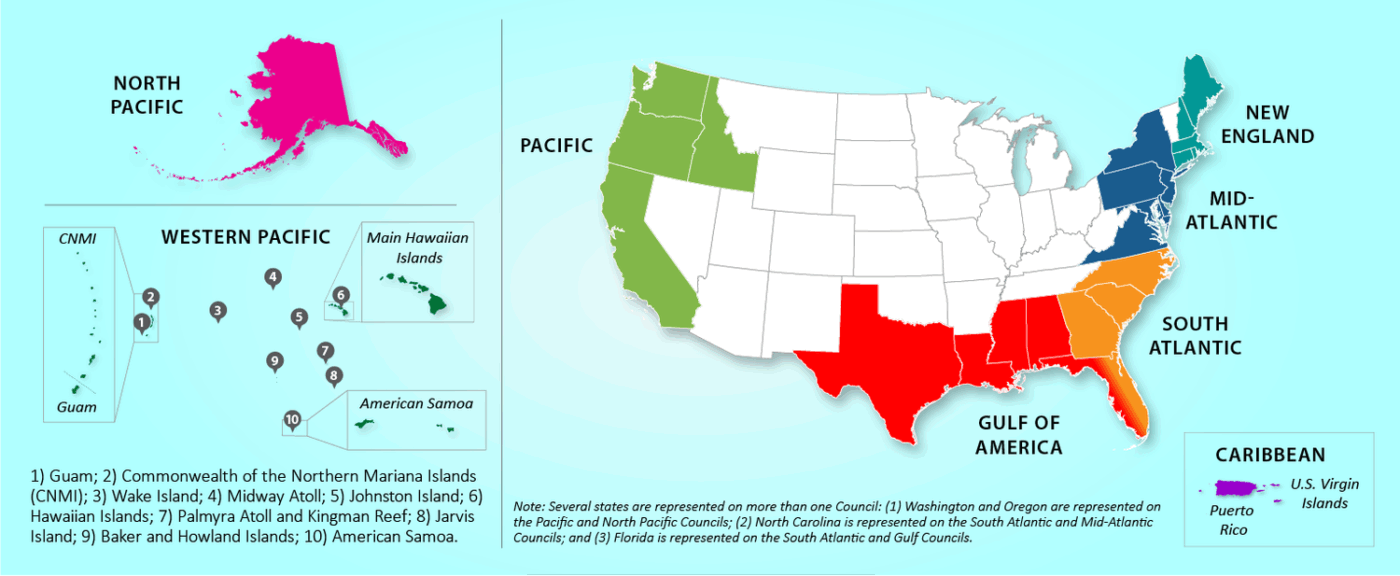
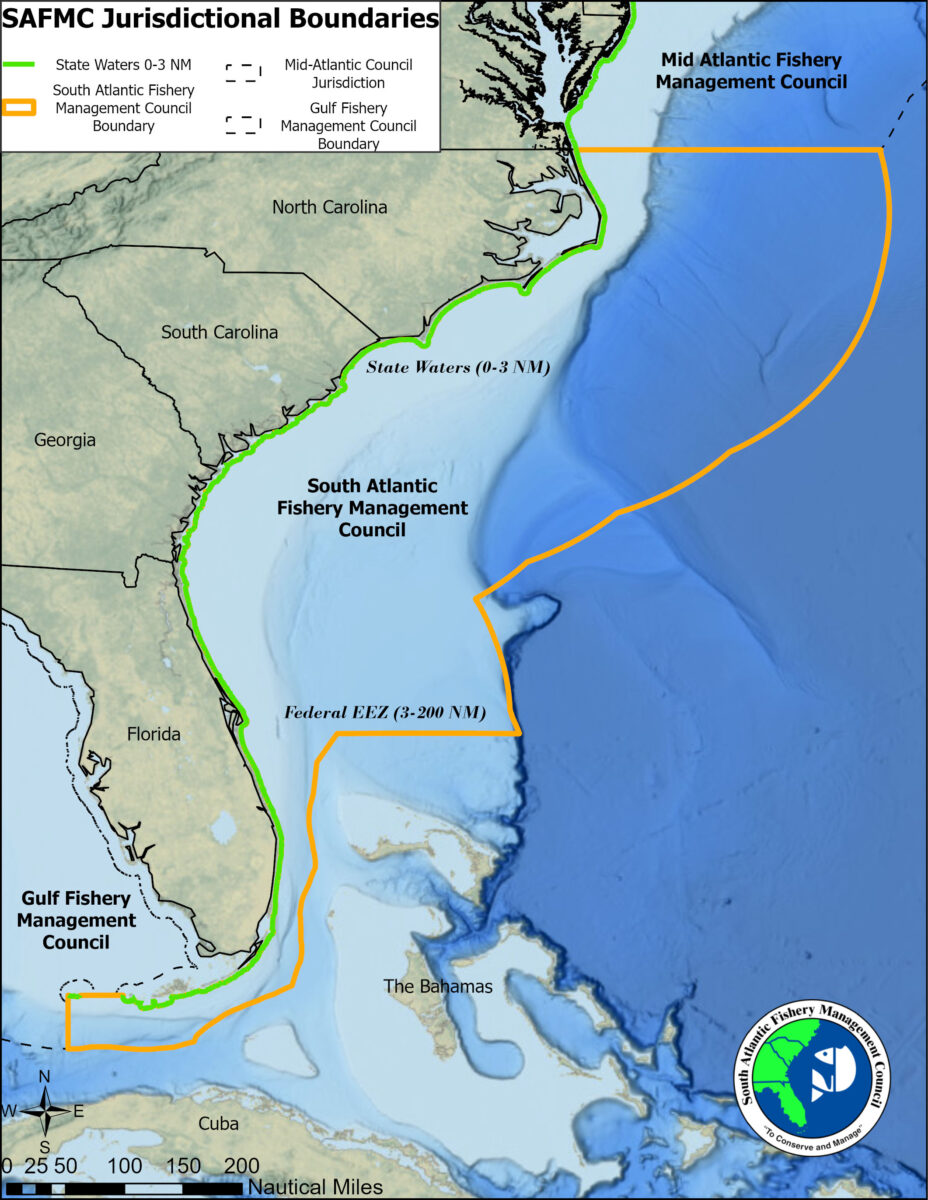
Responsibilities
The Magnuson-Stevens Fishery Conservation and Management Act (MSA) is the primary law governing marine fisheries management in the U.S. Approved in 1976, the MSA extended the U.S. jurisdiction of fisheries out to 200 miles and established the eight regional fishery management councils, creating a transparent and public fishery management process. The councils must follow the guidelines outlined through the MSA, including 10 National Standards and Rules of Conduct to promote sustainable and ethical fisheries management.
The South Atlantic Council develops fishery management plans and recommends management measures designed to ensure the long-term sustainability of the resources it manages. Specific responsibilities include:
- Developing and amending fishery management plans for approval/implementation by the National Marine Fisheries Service (NMFS) on behalf of the Secretary of Commerce
- Setting annual catch limits and management measures based on the best available science
- Developing research priorities with scientists and stakeholder/industry partners
- Conducting public hearings and gathering public input on proposed fishery management actions
Managed Fisheries
Over 64 species of finfish, crustaceans, and corals are managed by the South Atlantic Council through eight fishery management plans. The South Atlantic Council works jointly with the Gulf of Mexico Fishery Management Council, Mid-Atlantic Fishery Management Council, New England Fishery Management Council, and the Atlantic States Marine Fisheries Commission to address management needs across jurisdictional boundaries.

Council Members
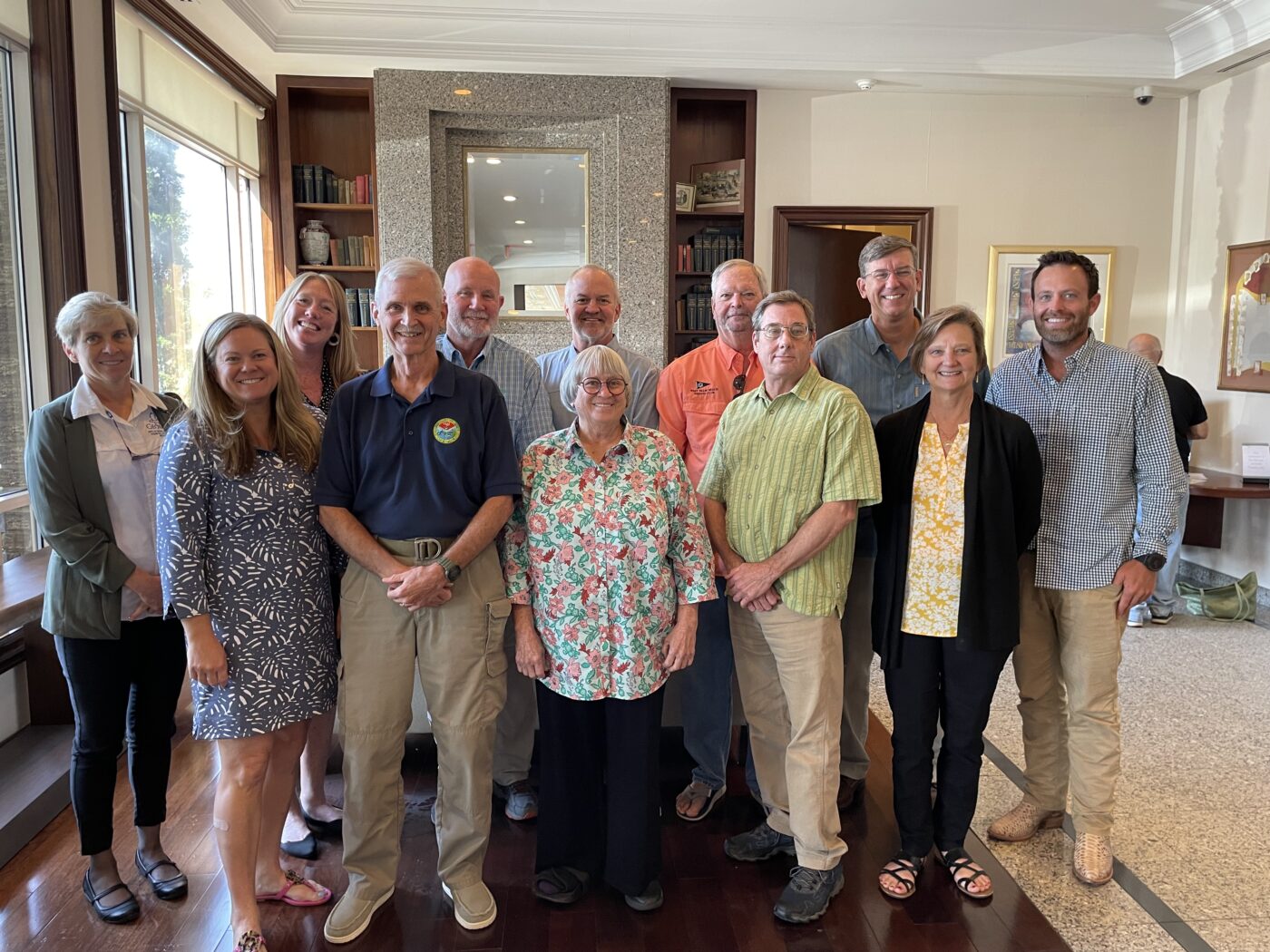
The South Atlantic Fishery Management Council has a total of 17 members, with 13 voting members including eight citizens from the four southeastern states. Appointed members serve three-year terms and are appointed by the Secretary of Commerce from lists of nominees submitted by the governors of each state. Appointees are limited to 3 consecutive terms.
Council Process
The South Atlantic Council meets four times each year, once in each of the southeastern states. The Council meetings are open to the public and available via webinars as they occur. Before final action on any proposed rule change is taken, the Council involves the public through informal public scoping meetings, public hearings, and input at Council meetings. Proposed rule changes are then sent to NMFS for further review, public comment, and consideration by the Secretary of Commerce before being implemented.
In addition, the Council receives input and recommendations from knowledgeable people from other state and federal agencies, universities, and members of the public who serve on various committees and panels. These include Advisory Panels, the Scientific & Statistical Committee, and the Socio-Economic Panel.
Learn more about the SAFMC Statement of Organization, Practices, and Procedures.
Learn more about the U.S. Regional Fishery Management Council System.
